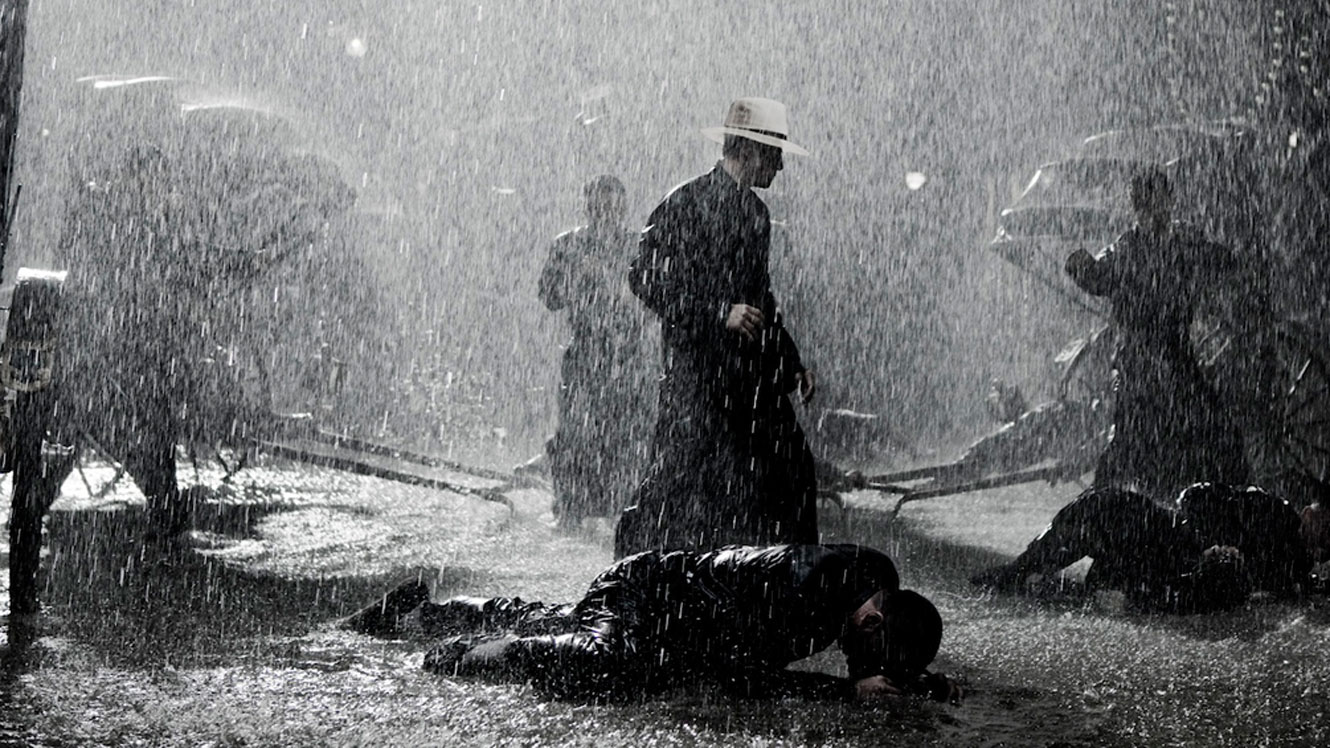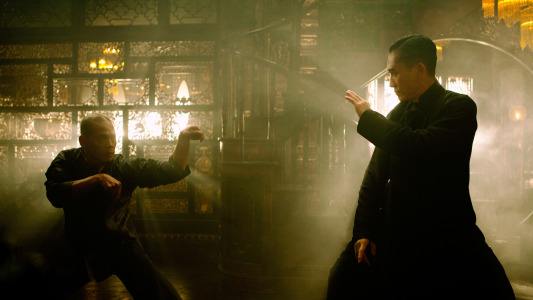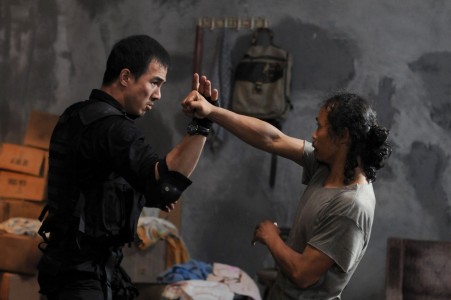Since cinema began, there have been good guys and there have been bad guys. Even in the silent films era, gangs and social figures were presented as being at odds with one another, fighting over turf, power and social respect. We have come a long way from the shoot outs of early cinema; figures today flip through the air and defy gravity. Seemingly average people seem to be gifted with inexplicable fighting abilities, transforming themselves from everyday folk to super people in a matter of seconds. And they do it better than the superheroes themselves.
Wong Kar Wai returns to cinema screens with a retelling of martial arts master Ip Man’s life, The Grandmaster. Whilst the narrative content has been somewhat chewed apart by critics, there has been no doubting the film’s fighting content. Like much of martial arts on screen, The Grandmaster considers fighting as a type of choreography and art, painstakingly setting up each fight scene down to the most minute of details. What with it being a Wong Kar Wai film, we can expect our fair share of dreamy visuals, dense atmospherics and moody set pieces. And when it comes to the fighting, there is something perceptibly different in the film’s approach. The film’s opening alone is enough to rattle the conventions of cinematic fighting. Set in an appropriately atmospheric rainstorm, the opening battle sees Ip man take on an entire gang, breaking someone’s leg with a single blow, sending men flying left, right and centre and breaking formed constructions. Ip Man is presented as something more than human and yet, much of the film looks into the very humanistic parts of his life, delving more intimately than other versions have done before. The fighting in the film is less about brawn than it is about intelligent expression and moral power struggles.
With The Grandmaster, the cinematic fight is given something of a do-over, represented in a alternate light, as something in which the audience can become intellectually invested. However, Wong Kar Wai’s cinematic release is only a part of something bigger, a change which has been happening in film for a long time. Gone are the days in which the good fought the bad in unchallenged triumph; things now are a whole lot more complicated.
Nicolas Winding Refn’s Pusher trilogy has fighting scenes. And then some. Over the course of the three films, heroes come and go, are pushed to their limits and beaten endlessly and, as an audience, we have no idea where to look. Winding Refn is a big fan of the anti-hero; look at Drive. Whilst we back the driver without question, he is by no means a ‘good guy’. The guy smashes someone’s face in. On camera. And yet, we do not question his actions because we view the world through his eyes. He is our hero, he tells us what to see. Similarly, the men in the Pusher trilogy are real world ‘bad guys’; they shirk away from responsibility, they deal in illegal activity, they put those around them at serious risk without even questioning it. Unlike Wong Kar Wai, Winding Refn has a preference for brute force in fight scenes. The people who fight here are massive, barreling muscle machines. There is no grace whatsoever. And yet, in the way that Winding Refn captures the action on camera, there is something choreographed and, dare I say it, poetic about the fighting. It is not merely men hitting men; it is men down to their last fibres, spitting blood and breaking their backs to save their lives. They are barely living and still they fight to exist. In pure emotion alone, Winding Refn hooks his audiences, willing them to watch the ever-brutal fight scenes he creates.
In a film like The Raid, however, things are set up a little differently. Whilst the film may be scarce on narrative development, its choreography and action sequences are so developed, that it’s hard not to be completely hooked. Set up around the raid of a derelict building, the follows a police unit as they attempt to thwart the attacks of a criminal gang and make their way to the top of the high rise to take down a brutal crime lord. The film, of course, is fronted by the rookie commando, whom the other men advise to keep out of the action. Inevitably, the rookie is something of a fighting genius, taking on multiple attacks and gang fights at once, single handedly. As the film is constructed largely around fighting, the action sequences are incredibly in depth and delicately constructed. Like The Grandmaster, the fighting here is strategic and almost clinically effective. But what The Grandmaster pushes in poeticism, The Raid contains in brute force. The film is almost a mix between the grace of martial arts and the jaw splitting brutality of face to face contact. In the sequences, you can hear every bone splitting, every blood vessel bursting. The Raid is visceral to the core and all the better for it.
In some films, however, our expectations are completely blown out of the water. Whilst The Matrix series completely changed what it meant to fight on screen, films like Oldboy did it with a little more panache. Park Chan-Wook’s original sees one man fighting an unknown organisation, who kidnapped and incarcerated him for 20 years without explanation. On his release, he’s angry to say the least. Apparently, bottled rage erupts in mysterious ways and the fighting scenes in Oldboy are testament to this. In one particularly memorable and lengthy sequence, the protagonist takes on fight after fight after fight over the space of a corridor, coming out the other end seemingly unharmed. He is superhuman and then some. Oldboy shows how our emotions can transform our physical capabilities and, when put into action, take us to the next level of humanity. Fighting on screen often tells us more about the human condition than words could ever hope. It is the deepest link to our most base emotion and can break, or make us into something quite extraordinary.



